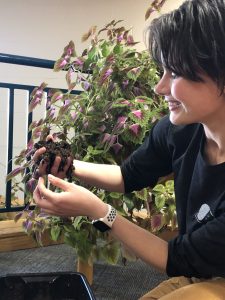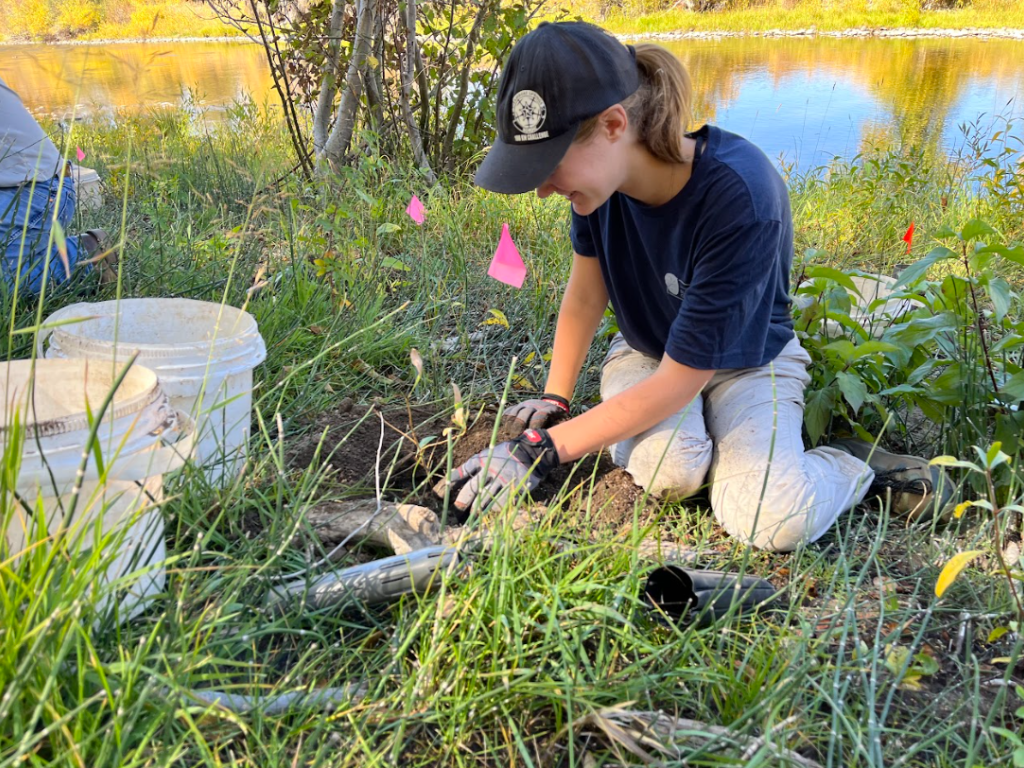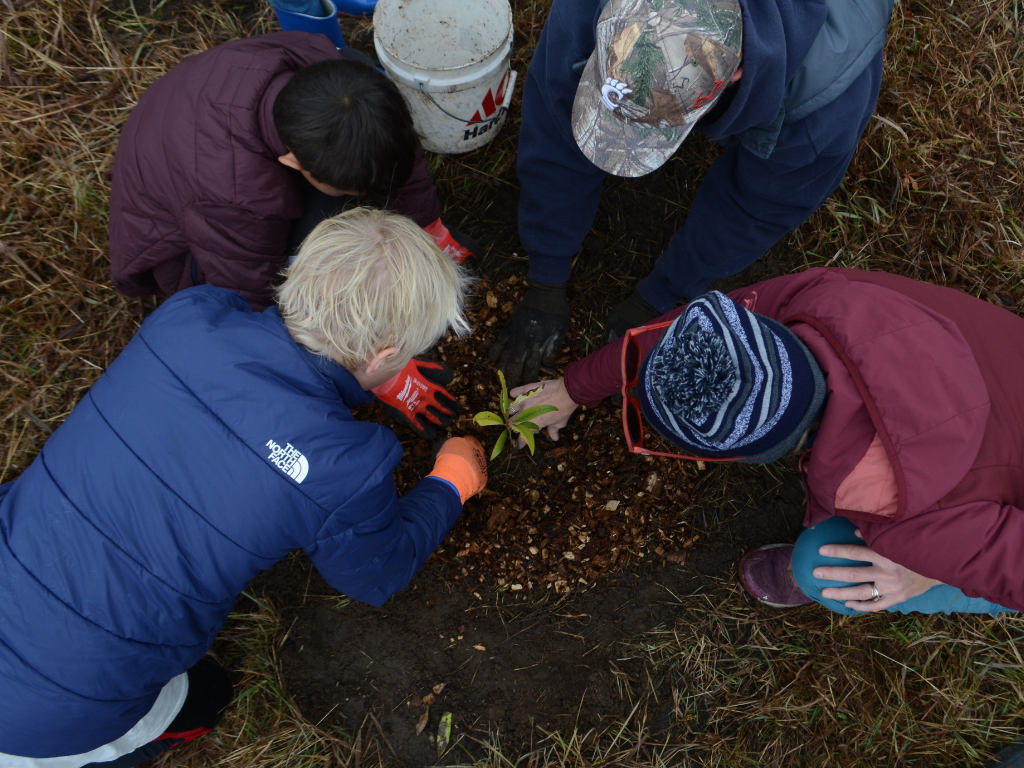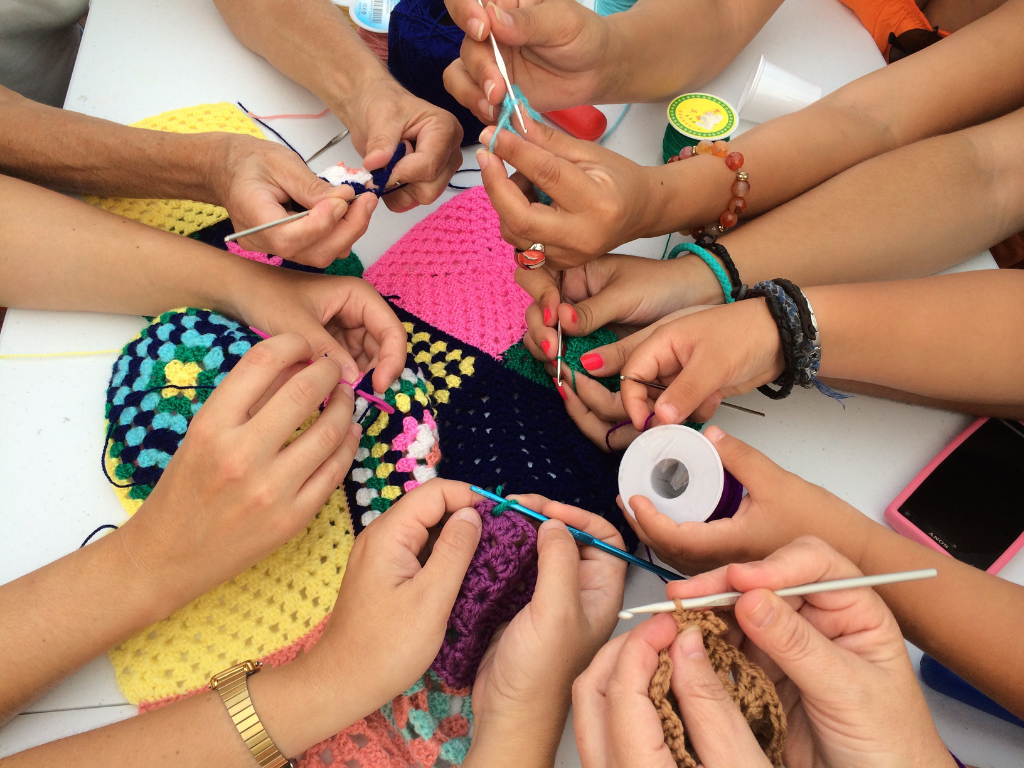Hi there, my name is McKenna Deeble, and I am one of three YVSC interns this spring. I am working with the Waste Diversion crew to add a little bit more infrastructure to our composting systems. Through this project, I have learned a lot more about composting than I ever thought I’d need to know, but I’ve also learned how important, accessible, and useful composting is to  keeping the Yampa Valley beautiful for decades to come.
keeping the Yampa Valley beautiful for decades to come.
There are several ways that you can compost at home. If you have an outdoor space, passive, or ‘cold’, composting may be a good option for you. Passive composts are little more than a pile of your food/yard waste. These composts require the least amount of maintenance, and could be anything from a bin to a fenced-off corner on your property. If you’re a winter/summer bird, this compost can be left alone while you’re away and be waiting for you when you come back to the Valley.
There are a few drawbacks to passive composting, though. While these composts take about 2 years to produce usable compost, you can speed up the process by making sure your compost stays comfortably moist, keeping it in the garage during the winter months, and semi-regularly turning the compost to keep the oxygen flowing. Technically, almost anything can be composted in these structures, but if the compost is outside, you’ll have to be bear-conscious about what you put in there or how you enclose the compost.
No yard or garage? No problem! Vermicomposting could be a good option for you. Vermicomposting, or worm composting is one of the most efficient forms of composting. You could buy a vermicompost online or build one yourself, but as long as you have a dark, enclosed space with a few ventilation holes and some drainage, your worms will be a-ok.
Vermicomposts require more maintenance than passive composts, especially in the beginning. Once the compost really gets going, it should regulate its moisture content, but in the beginning you may have to regularly check on it to make sure it doesn’t get too wet or dry out. It should have the moisture-consistency of a wrung out towel. You’ll also need to make sure that there is no mold in the compost. The worms will eat mold, but it does kill them, so if there is any mold in the compost it needs to be removed.
Vermicomposts can take care of your vegetable scraps, eggshells, tea and coffee grounds, and some yard wastes, but they will not touch animal waste, meats, dairy, bread or crackers. If you put any of these materials in the vermicompost, the worms won’t go near them, so they’ll mold, stink up your space, and, most devastatingly, poison your worms.
If your vermicompost is healthy, it should not stink. Bad odors are a sign that food is rotting in the vermicompost, which means that your worms aren’t able to do their jobs. The compost should also not be emitting worms. Personally, I keep my vermicomposting structure in a box to make absolutely sure I don’t have any escapee worms, but if the inside of the vermicompost is significantly darker than the outside, the worms shouldn’t be trying to escape. If you have many renegade worms, it could be a sign that the inside of the compost is too wet, too full of compost, or doesn’t have enough food.
If at-home composting doesn’t sound like your cup of tea, there are two commercial composting options available in the Yampa Valley, TwinEnviro and Cowgirl Compost.






